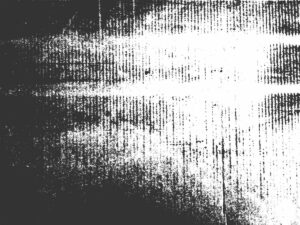A concept I work invariably with my authors is character versus plot arc. “Story arc”—the Hero’s Journey, Save the Cat! beats, or a story circle of happenings in any tale is invaluable (more about that later), but just as the perfect bread dip is a fine mixture of oil and Parmesan, a complete, compelling, and comprehensive story arc includes both a solid plot arc and a corresponding character arc.
Think of your overall plot like a helical pattern, a line of DNA composed of two intertwining strands that twist around each other and—eventually—intersect. You can’t have a compelling character who doesn’t do anything, and you can’t have a compelling plot if that character doesn’t change and/or doesn’t change the world around them. (Flat characters are a different story, but we can talk about those later.)
This may seem like pseudoscience jargon (apart from the metaphor, it truly is), but in order to understand how to write a compelling plot and why that plot is compelling, you have to understand plot arc, character arc, and how the two play off one another.
WHAT IS A CHARACTER ARC?
If your character embarks on a journey, takes up a perilous quest, or dares to apply for that new job on Wall Street, they shouldn’t end their adventure as the same person they started. (Except for flat characters, I know, but that’s a totally different blog post.) A good story grows and changes your main character. It teaches them that thing they NEED to learn. But that change isn’t instantaneous, and it doesn’t come out of the blue, either.
Your character changes along their adventure because their adventure changes them.
This is the character arc, your hero’s personal growth from Point A to Point B. In A Christmas Carol, Scrooge starts his journey as a lonely, miserly old man convinced that money is his only security. However, over the course of traveling Christmas Eve with three separate ghosts, he learns to face the phantoms of his past trauma and truly embrace the spirit of the season—and the love that surrounds him each and every day. Scrooge ends his journey as a kind, joyful, and giving man, chock-full of altruism and ready to toss free turkeys to anyone he meets.
It’s an elementary example, I know. But that doesn’t make it any less of a good one.
When hashing out your own character’s arc, I want you to ask yourself a few important questions:
What does your character WANT to accomplish?
WHAT has kept them from accomplishing this goal up until this point?
How does your character NEED to change?
What has kept them from changing up until this point?
HOW is what the character wants to accomplish going to drive them toward what they NEED to change, discover, or surrender to?
WHAT about this adventure ensures that this character will never be the same?
WHAT IS A PLOT ARC?
The plot arc is usually much more obvious than the character arc, but that doesn’t make it any less important. The plot arc is what happens in the story. Frodo is bequeathed a cursed ring, so he travels to Mordor to destroy it. Ebeneezer is visited by ghosts one fateful Christmas Eve, and they whisk him through the past, present, and future. Neo discovers he is living in a machine-built construct, the Matrix, and so he teams up with a group of rebels to fight for humanity’s freedom.
Of course, these examples are oversimplified. We all know that much more happens in each of these stories. But these are basic overviews of a plot arc, the play-by-play chain of events that takes us from the beginning of the story to the end. These are the outside happenings that envelop the hero as well as the pragmatic consequences for the hero’s actions within and around these events.
When we think of a plot arc, we usually think of something more like Joseph Campbell’s Hero’s Journey where the character is called to an adventure, crosses over into a new world, meets a mentor, etc. But we all know that a story—and Campbell’s genius breakdown, for that matter—aren’t that simple.
In order to understand the true essence of a story, you have to understand how the emotional pull (character arc) works together with the physical pull (plot arc).
HOW DO CHARACTER ARCS AND PLOT ARCS INTERACT?
Light and darkness, spirit and body, above and below… Our universe is made up of dichotomous dualities. Stories are no different. Your plot and your character arcs are yin and yang, working together in sync to illustrate a meaningful, relatable human experience.
Think about a straight up-plot arc. “This happened, then that happened.” We’re talking about a textbook.
Now imagine the inverse, a story purely comprised of how someone is reacting and developing internally. Well, now we’re looking at a teenager’s diary.
A story is much more than these two concepts on their own. It’s how the two arcs interplay that adds true meaning and depth. Your character is running around interacting with the world, and that changes what they think and feel. On the other hand, their own imaginings, preconceptions, and biases are impacting the way they interact with that same world, which bears physical consequences.
The interplay of plot and character arcs is essential. One drives the other. For example:
Scrooge is a miserly old curmudgeon because of the narrow, greedy mindset he formed in response to childhood trauma. This keeps Scrooge lonely and isolated. He has riches, but he truly isn’t happy and is unable to connect with humanity—notably his clerk, Bob Cratchit.
Scrooge’s long-dead partner, Marley, pays him a visit, warning Scrooge he will be damned in their world and beyond unless he changes. Marley sends three ghosts to visit Scrooge, and as the old miser visits his past, present, and future, he opens his heart to the human experience.
Scrooge wakes up Christmas morning changed by what he’s seen and experienced. One of his first actions as a redeemed, magnanimous soul is to visit his clerk’s house and shower the Cratchit family with food and resources, thereby saving the life of Cratchit’s youngest son, Tim, who responds to Scrooge with the familial warmth and acceptance he’s always yearned for.
That was a bit of a whirlwind summary. But it illustrates the point:
Your character impacts the plot, and the plot, in turn, changes your character.
When it comes to character versus plot arc, there’s really no “versus” at all. A timeless story hooks readers with both excitement and spirit. We care about what happens, but we also care about the characters as actualized beings. We need both character and plot arcs, and we need both of those arcs to be as strong on their own as they are when working together.
Is your character evolving over a complete arc, and is that supported, fueled, and defined by a dynamic plot arc? If you’re unsure or looking for ways to strengthen your story, schedule a complimentary editing call.
Photo credit: Anirudh.


